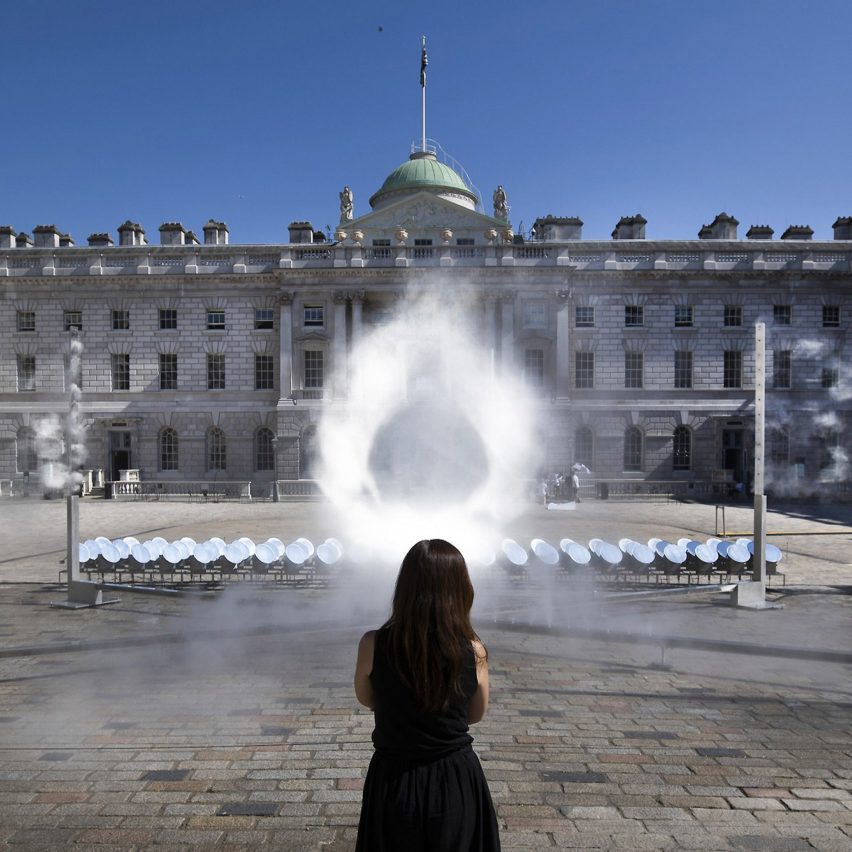
Halo by Seoul-based art studio Kimchi and Chips features 99 robotic mirrors that move continuously throughout the day, following the sun like sunflowers.
Arranged across one 15-metre-long track and two five-metre-tall towers, the computationally aligned mirrors beam sunlight into a cloud of water mist, creating a halo-like circle.
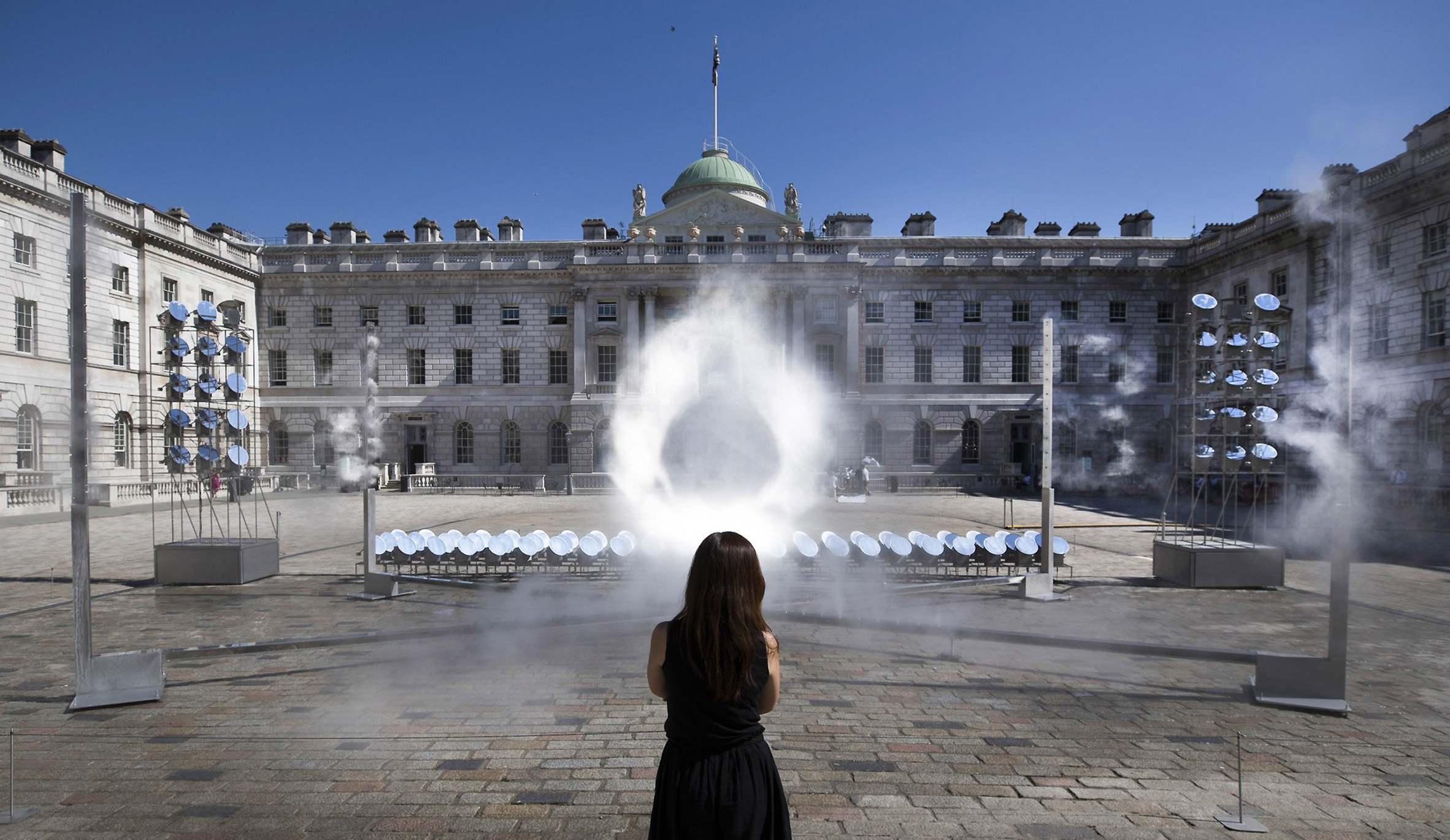
The installation was originally shown as part of a month-long public exhibition at Somerset House in London in June 2018 to coincide with the summer solstice.
It was co-commissioned by Arts Council England and Arts Council Korea.
"Halo draws attention to the power of the sun's energy, using 40 kilowatts of solar irradiation to create another sun suspended in the air above the courtyard at Somerset House," explained the studio.

Appearing only when the sun, wind, water and mirrors coincide, Halo explores the relationship between nature and technology in an urban space.
The installation also plays with the physical materiality of the halo formed in the mist and the ephemeral nature of light and wind.
"This is the first project where we have worked with natural light as a material and collaborated with the unpredictability of the weather," said Kimchi and Chips.
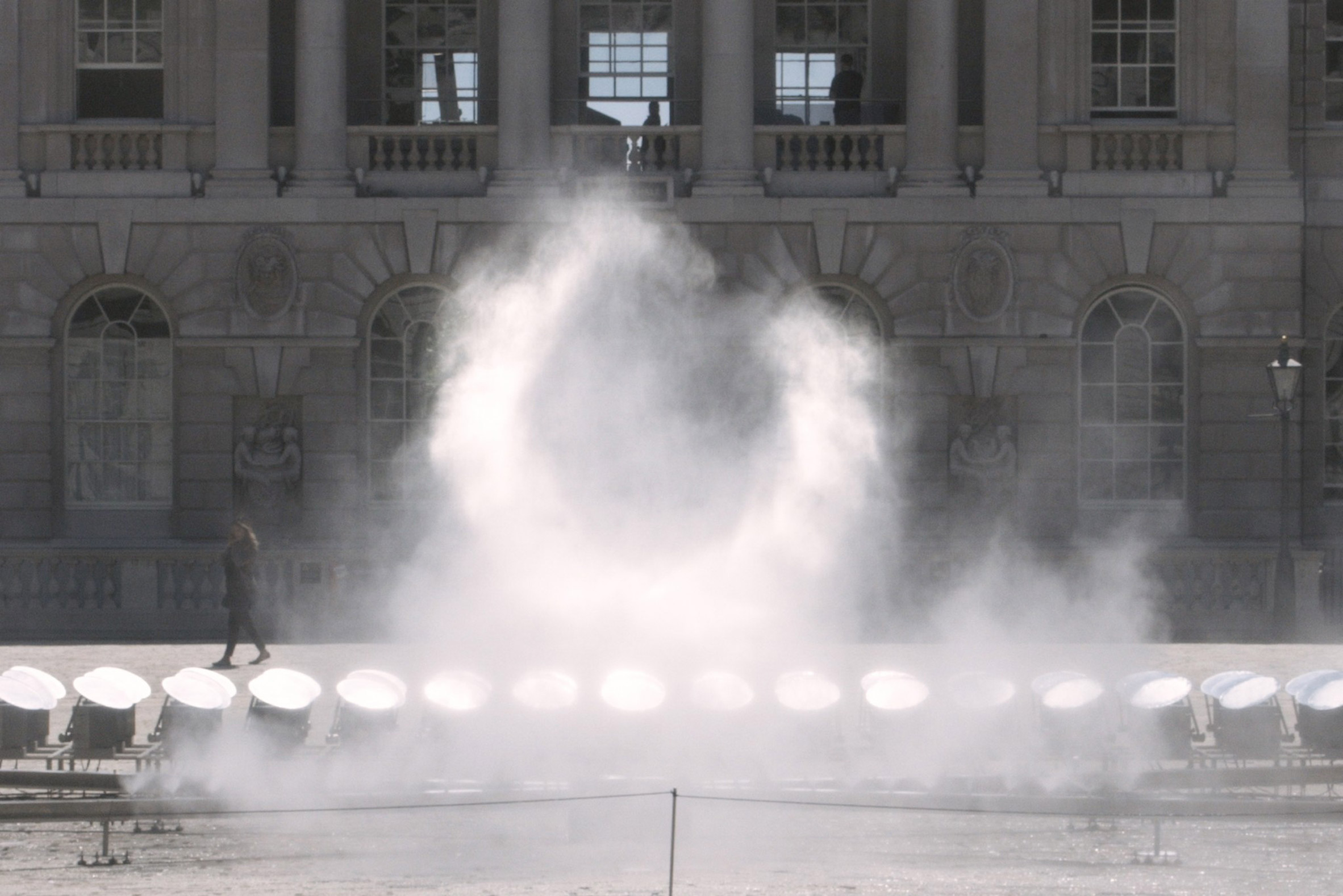
Kimchi and Chips intended the transient nature of the work to cause the viewer to reflect on the unpredictability of the world around them.
"Halo offers a theatre for meditation within the city," they said. "The wind causes the halo of light to appear and disappear without control, mirroring the way thoughts act in the mind."
"The moment that the halo emerges in the air briefly superimposes the transience of life and eternal nature of the sun," the studio added.
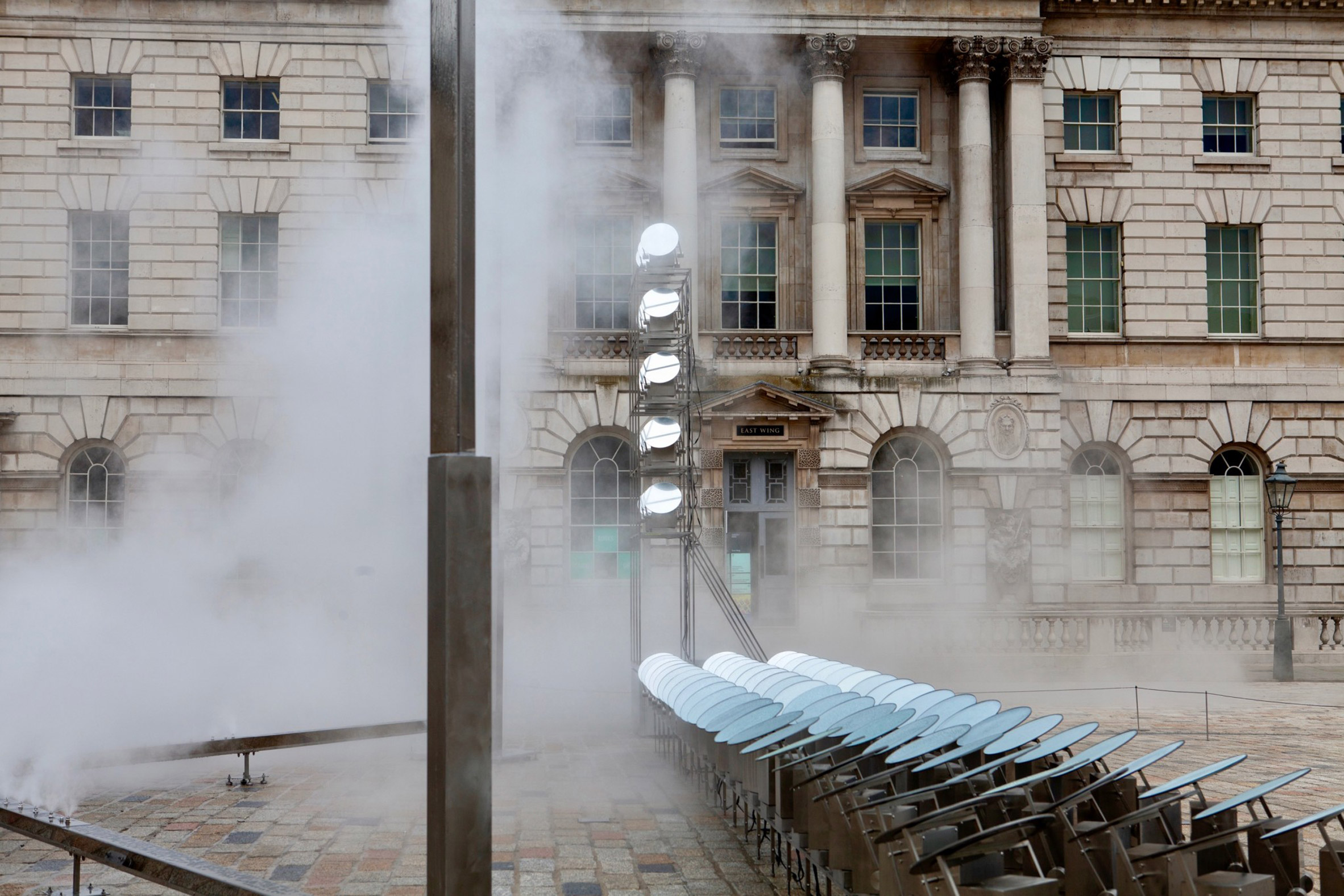
The number of robotic mirrors, which reflect the sky and surrounding buildings as well as beaming sunlight, is both significant and intentional.
"Ninety-nine is a number full of three-dimensional symmetries, but it also has a tension from its incompleteness," said Kimchi and Chips. "The halo itself is lit by the 99 reflections plus the sun directly, and is therefore lit by the power of 100 suns."
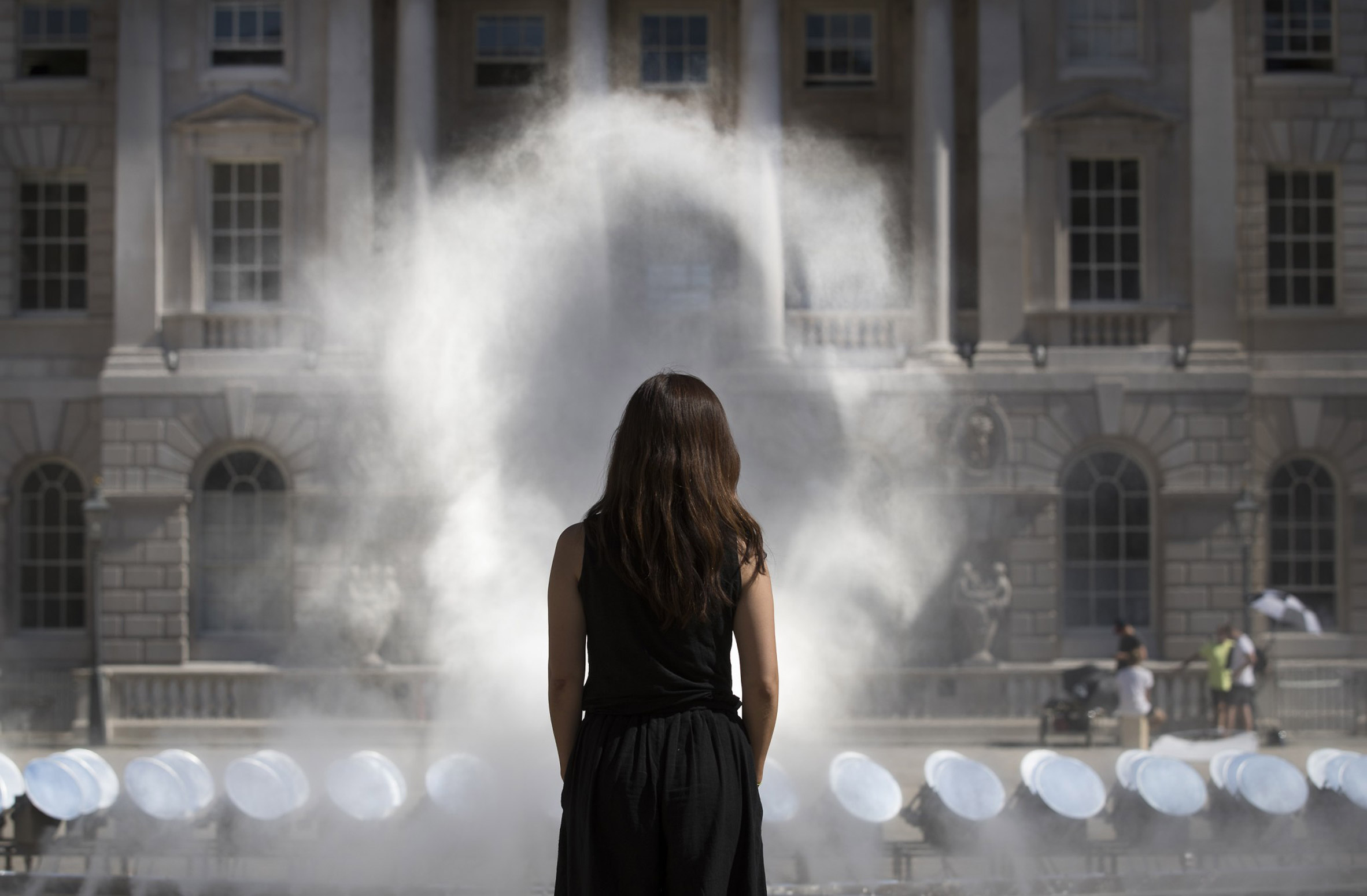
Mirroring the technology of a low-cost solar farm, the installation considers the potential of sustainably harnessing the sun's energy in urban areas, where air pollution is a major issue.
Halo has been shortlisted in the installation design category for Dezeen Awards 2019. Other projects up for the award are a pop-up zero-waste bistro in New York, and an outdoor bakery that uses a bicycle to grind flour.
The post Robotic mirrors follow the sun in installation by Kimchi and Chips appeared first on Dezeen.
https://ift.tt/2oLTWSf
twitter.com/3novicesindia
No comments:
Post a Comment